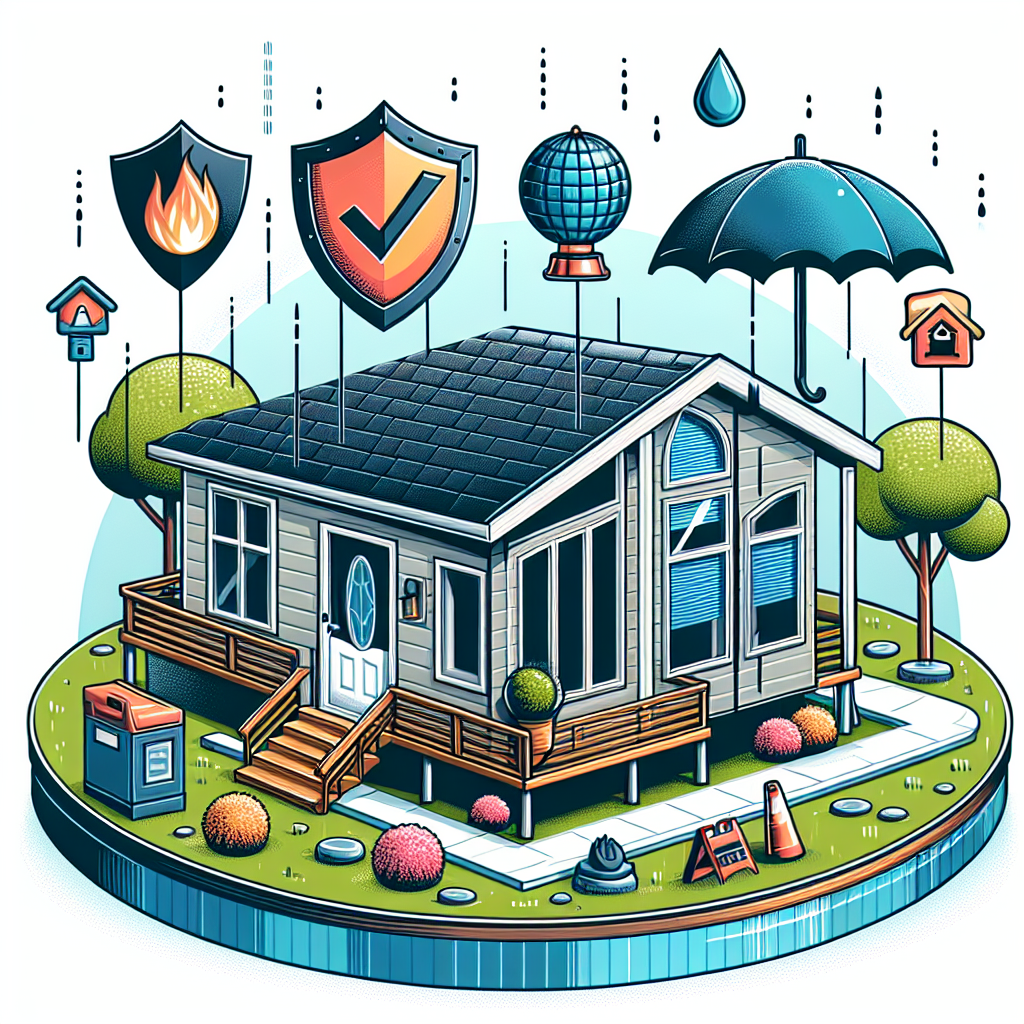Filed under Home Insurance on
Veterans Home Insurance Coverage Options and Discounts

Every homeowner deserves tailored protection, but veterans often face unique considerations — from deployment-related absences to adaptive home modifications and service animals. If you’ve earned your benefits through military service, understanding how insurers evaluate risk, price policies, and reward mitigation can translate into meaningful savings without compromising coverage. This guide to Veterans Home Insurance Coverage Options and Discounts explains how to build a policy that fits the way you live today, supports long-term goals, and reflects the value of your service.
Why veterans benefit from a tailored approach
Military service can shape your housing needs in ways that standard policies don’t always anticipate. You might have accessibility upgrades from a service-connected disability, expensive gear or memorabilia, a service animal, or periods of vacancy during training or medical treatment. In some markets, you may also face higher catastrophe risk — coastal wind, wildfire, flood — that demands smarter mitigation and the right endorsements.
Insurers evaluate these factors differently. Some carriers extend special underwriting considerations for active-duty deployments, offer affinity pricing, or include endorsements that safeguard adaptive equipment. Exploring Veterans Home Insurance Coverage Options and Discounts ensures you do not pay for protections you don’t need — or overlook ones you do.
Core coverages every veteran homeowner should understand
Most policies follow the HO-3 or HO-5 form. Regardless of the label, you want a clear understanding of these pillars:
- Dwelling coverage: Pays to repair or rebuild your home after a covered loss. Aim for full reconstruction value, not market price. In fast-changing markets, consider extended or guaranteed replacement cost.
- Other structures: Fences, sheds, detached garages, solar arrays. If you store tools or mobility equipment in a detached structure, confirm the limits and theft provisions.
- Personal property: The contents of your home. HO-5 policies often provide broader, open-peril protection. Add replacement cost so you’re reimbursed for new equivalents, not depreciated values.
- Liability: Covers injuries to others and property damage you’re legally responsible for. If you have a service animal or frequent community events at home, verify your liability limit and exclusions.
- Loss of use: Pays for temporary housing and living expenses after a covered loss. This is crucial if you need accessible accommodations following a claim.
Industry analysts have noted that catastrophe losses and construction inflation have pushed premiums higher in many states. According to the Insurance Information Institute and several leading reinsurers, weather severity and rebuilding costs continue to pressure rates, especially in coastal and wildfire-prone regions. That makes precise limits and smart discounts more important than ever.
Optional endorsements that matter for military and veteran households
Beyond the basics, endorsements can close coverage gaps that disproportionately affect veterans.
- Equipment coverage for medical or adaptive devices: Power lifts, stair glides, oxygen concentrators, and backup batteries can exceed standard sub-limits. Ask for scheduled coverage or a medical equipment endorsement.
- Replacement cost on personal property: This upgrade typically yields a better claim outcome on electronics, tools, and furnishings.
- Water backup: Protects against sump or drain backups. If you’ve installed a basement lift or track system, water intrusion can multiply costs.
- Service and support animal liability: Clarify whether your policy treats service animals differently from pets and whether breed restrictions apply. Seek explicit liability confirmation.
- Identity fraud and cyber coverage: Helpful for veterans who manage benefits online, travel frequently, or use smart-home devices.
- Ordinance or law: Pays for code upgrades during repair. Homes with earlier accessibility retrofits may require additional updates after a loss.
- Extended or guaranteed dwelling replacement: Extra cushion if rebuilding costs spike after a catastrophe.
- Scheduled personal property: For military memorabilia, collectibles, firearms with safes, or specialized equipment.
- Wildfire, windstorm, earthquake, and flood: Standard homeowners policies exclude flood and often exclude or limit earthquake. Evaluate National Flood Insurance Program (NFIP) policies and private flood options; consider a separate earthquake policy or a difference-in-conditions policy in seismic states.
Discounts veterans can qualify for
Competitive carriers stack multiple credits. When you explore Veterans Home Insurance Coverage Options and Discounts, ask about the following:
- Military or veteran affinity: Many insurers recognize service with a premium reduction. You may need documentation such as a DD214 or military ID.
- Bundle with auto: Combining home and auto can generate one of the largest multi-policy credits.
- Protective devices: Monitored fire, burglary, and water leak sensors. Smart-home systems that automatically shut off water or alert authorities often qualify for additional savings.
- Claims-free and loss-prevention: Credits for remaining claim-free and using mitigation measures like leak detectors, fire extinguishers, and security cameras.
- Roof age and impact-resistant materials: Class 3 or Class 4 shingles may carry a significant discount in hail-prone regions.
- Mitigation certifications: IBHS FORTIFIED designations, wildfire defensible space, or hurricane shutters can reduce premiums with certain carriers.
- Loyalty and renewal: Long-term customers often receive reduced rates or special waivers.
- Paid-in-full, autopay, and paperless: Billing choices that lower administrative costs can trim your rate.
- Gated or secure community: Additional credits for reduced theft risk.
- New home or renovation: Newer construction or recently updated electrical, roof, and plumbing can qualify for better pricing.
Insurers vary widely in how they apply credits. A carrier with modest military discounts may still be your best option once roof, smart-home, and mitigation credits stack. Comparing multiple quotes with the same limits and deductibles remains the best way to capture the full value of Veterans Home Insurance Coverage Options and Discounts.
How to compare quotes like a pro
Use a side-by-side comparison to isolate the best value, not just the lowest premium.
- Start with consistent limits: Dwelling, personal property, liability, and loss of use. Adjust each quote to the same numbers before you evaluate pricing.
- Check replacement cost details: Confirm replacement cost on dwelling and personal property. Extended or guaranteed replacement can be a decisive differentiator.
- Match deductibles carefully: In coastal zones, you might have separate wind, named storm, or hurricane deductibles expressed as a percentage of dwelling coverage.
- Align endorsements: Ensure water backup, ordinance or law, and equipment coverage are either included or priced similarly.
- Compare service: Review claim satisfaction scores from sources like J.D. Power, and ask about emergency response options, preferred contractor networks, and mobile claims units.
- Ask explicitly about veteran benefits: Some carriers don’t advertise all affinity discounts; others partner with military associations to unlock additional savings.
Carriers and membership nuances veterans should know
Eligibility and offerings differ notably across the market:
- USAA: Known for strong military-centric benefits and high claim satisfaction, but membership is limited to service members, veterans, and eligible family members. Excellent for bundling and deployment considerations.
- Armed Forces Insurance: Serves military members and veterans, with flexible underwriting for unique living situations.
- Major national brands: State Farm, Allstate, Liberty Mutual, Farmers, and others may offer veteran discounts, mitigation credits, and robust digital tools for inventory and claims.
- Credit union partners: Some insurers partner with institutions like Navy Federal Credit Union for preferred pricing or streamlined billing.
- Regional carriers: In catastrophe-prone areas, regional companies often specialize in local risks, offering incentives for wildfire hardening, hurricane shutters, or hail-resistant roofing.
One practical approach is to obtain a quote from a military-focused provider and one or two top regional or national carriers. Using this mix highlights where veteran-specific features add value versus where general underwriting and mitigation credits dominate.
VA-backed loans and homeowners insurance
The U.S. Department of Veterans Affairs does not provide homeowners insurance, but lenders require it for VA-backed mortgages. If your home is in a special hazard area, flood insurance may be mandated as well. Here are VA-related details to watch:
- Escrow: Many VA borrowers escrow insurance premiums with their mortgage payment. Align renewal and escrow timelines so you avoid payment gaps.
- Occupancy expectations: VA loans generally assume owner occupancy. Extended absences can trigger unoccupied or vacancy clauses in home policies, so ask your carrier for deployment accommodations if needed.
- Appraisal and coverage: The VA appraisal focuses on property value and safety, not insurance limits. Use a replacement cost estimator with your agent to set proper dwelling coverage.
- Remodels and accessibility upgrades: Notify your carrier after completing VA grant-funded modifications, such as ramps or bathroom retrofits, to ensure correct replacement values.
Working closely with your lender and insurer during home purchase or refinance helps you coordinate documents and safeguard closing timelines. It also ensures you’re capturing all Veterans Home Insurance Coverage Options and Discounts available to you.
Flood, wildfire, and catastrophe readiness
The last few years have brought higher severity weather events and broader risk awareness. Experts from the Insurance Information Institute and federal emergency agencies note that mitigation — roof upgrades, defensible space, and elevation — can materially reduce losses and speed recovery.
- Flood: Standard home policies exclude flood. Consider NFIP or private flood insurance, even outside mandatory zones. Just a few inches of water can cause substantial damage to adaptive equipment and flooring.
- Wildfire: Clear vegetation, harden vents, and consider Class A fire-resistant roofing. Some insurers offer discounts for documented mitigation or community-wide programs.
- Wind and hail: Install impact-resistant roofing and window protections. A fortified roof can reduce premiums and future headaches.
- Earthquake: Separate policies with deductibles based on a percentage of dwelling coverage. Secure water heaters and large furniture to reduce injuries and claims severity.
Check whether your insurer recognizes IBHS FORTIFIED, local firewise certifications, or municipal mitigation grants. Aligning your upgrades with recognized programs can unlock additional credits as part of your Veterans Home Insurance Coverage Options and Discounts strategy.
Save without sacrificing protection
There’s a smart way to lower premiums while improving resilience and claim outcomes:
- Increase deductibles thoughtfully: Raising your all-peril deductible can cut premiums, but ensure you can afford the out-of-pocket cost. Weigh higher wind/hail percentage deductibles carefully in storm-prone regions.
- Target high-value endorsements: Replacement cost and water backup are relatively small line items that avert painful claim reductions.
- Bundle strategically: If auto telematics yields big savings — especially common with low mileage during retirement — bundling can compound discounts.
- Prioritize the roof: Insurers heavily weight roof age and materials. Upgrading can pay for itself through reduced premiums and avoided losses.
- Use home sensors: Automatic water shutoff valves, smart smoke detectors, and professional monitoring can qualify for meaningful credits and early loss detection.
When you revisit your policy each renewal, treat it like a mini home audit. Document improvements, update personal property inventories, and rerun quotes if premiums jump. That systematic approach will keep your Veterans Home Insurance Coverage Options and Discounts aligned with current market conditions.
Deployment, travel, and vacancy considerations
Vacancy and unoccupancy can affect coverage in ways many policyholders don’t realize. Some policies restrict vandalism or water damage claims if the home is vacant beyond 30 or 60 days, while others may require you to tell the carrier when you’ll be away for extended periods.
- Ask for military accommodations: Certain carriers waive or modify vacancy terms for deployment or medical treatment if you notify them in advance.
- Maintain utilities and monitoring: Keep the heat at safe levels in winter, consider smart thermostats and leak sensors, and use timed lighting to deter theft.
- Arrange regular check-ins: A neighbor or property manager should document periodic visits. Some insurers accept this as a mitigation practice.
- Secure valuables: Store firearms in a safe; consider scheduled coverage for high-value items kept offsite in a vault or storage with security.
If you plan to rent the property short-term while away, ask about a home-sharing or landlord endorsement. Standard homeowners insurance rarely covers business use without modifications.
Documentation tips to streamline claims
Clear records shorten claim timelines and improve outcomes, particularly if you have specialized equipment or modifications.
- Keep proof of service on file: DD214 or equivalent documents can expedite veteran discounts and policy notes.
- Inventory your personal property: Use a simple room-by-room video plus serial numbers for high-value items.
- Document modifications: Save receipts, photos, and permits for accessibility upgrades and installed devices like lifts or ramps.
- Retain maintenance records: Roof, HVAC, plumbing, and electrical upgrades can sway both underwriting and claim reviews.
- Practice claim scenarios: Know your carrier’s preferred contractors, emergency vendors, and claim hotline. Save this list offline.
Costs, trends, and what experts are watching
Market data points to continued volatility by region. Analysts cite labor shortages, supply chain shifts, and reinsurance costs as persistent pressures. State-level regulatory changes, catastrophe modeling updates, and risk-based pricing also influence what you pay. In several states, average annual premiums have risen notably in recent years, while others remain stable thanks to competition and lower catastrophe exposure.
Insurers and public agencies continue to invest in resilience. Programs that reward pre-loss mitigation — more fire-resistant roofs, sealed attic vents, hardened structures — are forecast to expand. For veterans, these incentives dovetail with practical steps to safeguard adaptive equipment and maintain independence at home. Embedding mitigation into your Veterans Home Insurance Coverage Options and Discounts plan yields benefits far beyond a premium line item.
Frequently asked questions
Do veteran discounts reduce coverage?
No. Affinity discounts reduce price, not protection. Verify, however, that you are not trading away critical endorsements to drop premiums. Favor risk reduction over bare-minimum coverage.
Is flood insurance necessary if I’m not in a high-risk zone?
It’s optional but often wise. Many flood claims occur outside mandatory zones. If you have a basement, valuable electronics, or adaptive equipment at ground level, flood insurance can be a prudent add-on.
Can a service animal void coverage?
Carriers treat animals differently, but a trained service animal is generally viewed as a risk similar to a pet for liability purposes. Ask your insurer for written confirmation and clarify any breed-specific exclusions or requirements.
What proof do I need for veteran discounts?
Most insurers accept a DD214, veteran ID card, or proof of service. Some accept membership in recognized military associations.
What if I split time between homes?
Secondary residences, seasonal homes, and rental properties often require different policy forms and have stricter vacancy rules. Work with an agent familiar with multi-state and military lifestyles.
Practical checklist before your next renewal
- Recalculate dwelling replacement cost with current construction prices.
- Confirm personal property replacement cost and list high-value items to schedule.
- Add or update endorsements: water backup, ordinance or law, equipment coverage.
- Verify liability limits, especially if hosting events or owning a service animal.
- Ask directly about military and veteran discounts and any new affinity programs.
- Provide documentation for roof age, mitigation upgrades, and smart-home devices.
- Review deductibles, including separate wind or named-storm deductibles.
- Shop at least two additional quotes with identical coverage specs.
- Align policy dates with mortgage escrow and set reminders for renewal.
- Update your home inventory and store copies offsite or in the cloud.
Real-world scenarios and how coverage responds
Basement water backup damages a stair lift
Without water backup coverage, you could pay out of pocket for both cleanup and equipment replacement. With a backup endorsement and scheduled medical equipment, you’re protected for the device and associated repairs, subject to limits and deductibles.
Windstorm destroys an older roof during supply shortages
Extended or guaranteed replacement cost can absorb price spikes in materials and labor after a regional catastrophe. Impact-resistant replacement may earn a future discount once installed.
Deployment triggers extended absence
Notify your insurer. Some carriers record a deployment accommodation, maintain full coverage, and may ask for a property check-in plan and smart-monitoring devices as conditions.
Negotiating with your insurer: what to say and what to show
When you approach your agent or carrier, specificity helps:
- Service status: “I’m a veteran and would like to review all affinity credits and documentation requirements.”
- Mitigation proof: “Here are photos and invoices for my Class 4 roof, water shutoff valve, and monitored alarm system.”
- Coverage ask: “Please quote replacement cost on personal property, 25% extended dwelling replacement, $10,000 water backup, and an endorsement for medical equipment.”
- Deployment plan: “I’ll be away for 90 days; here is my smart-monitoring setup and local contact who will inspect biweekly.”
This level of detail signals lower risk and helps underwriters apply the most favorable pricing within their guidelines. It also ensures your Veterans Home Insurance Coverage Options and Discounts are fully recognized.
The bottom line
Veteran homeowners have distinct needs that deserve more than a one-size-fits-all policy. The right blend of core coverages, targeted endorsements, and stacked credits can protect your home, your independence, and your budget. By documenting mitigation, confirming eligibility for affinity pricing, and comparing apples-to-apples quotes, you can harness the full power of Veterans Home Insurance Coverage Options and Discounts. Do a structured review each renewal, keep your inventory and records current, and coordinate with your lender if you have a VA-backed mortgage. With a clear plan, your coverage will be as strong and dependable as the service you’ve already given.
If it has been a year or more since you last shopped, now is the ideal time to revisit your policy. Markets change quickly, and so do insurers’ underwriting appetites. Ask a trusted agent or broker to benchmark your policy against current offers, and be sure to highlight your military service, mitigation upgrades, and any special equipment to capture the most relevant Veterans Home Insurance Coverage Options and Discounts.





